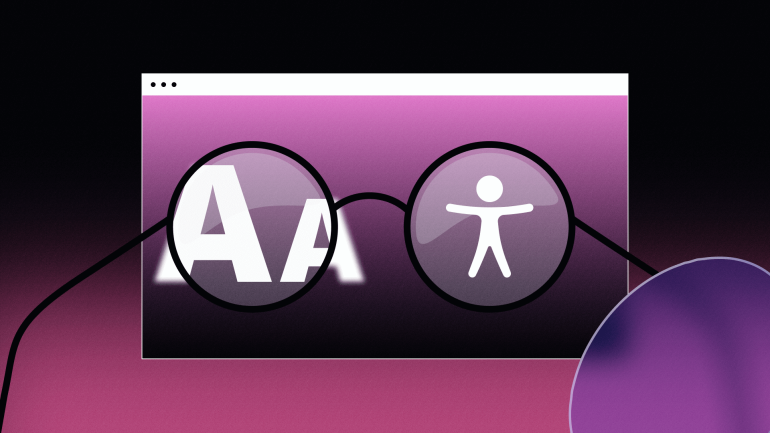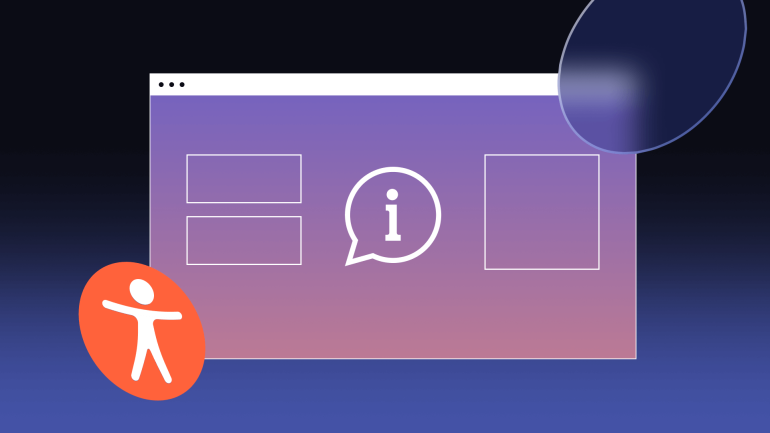One of the key benefits of a web accessibility widget is the customization that it provides to site users to enhance usability. When implemented mindfully and responsibly, web accessibility features through a widget are useful tools to add value, lower barriers of entry and reduce the friction encountered by people with disabilities when using a website.
Usability is such an advantage for web overlays that they are being used by some of the most high-profile websites in the United States. One of the very first actions by President Biden’s administration was to implement a web accessibility widget to whitehouse.gov. On the same day of his inauguration on Jan. 20, 2021, the president’s direct website underwent some unexpected additions, which mainly involved the addition of an overlay tool offering site guests the option to toggle color contrast and resizable font size.
Website overlay widgets commonly appear on a website’s margins or corners and are many times recognizable by the universal accessibility symbol icon. In the case of Whitehouse.gov, it is simple user-triggered tabs on the side of the desktop site. These accessibility overlay tools have never been easier to implement into an existing site and have become a crucial way for the modern website to become more inclusive for all people to access its resources and content.
Let’s review best practices and how website owners can utilize web overlays responsibly and ethically to add functionality to a website. First, we’re going to review what web overlays are.
What is an Overlay Widget?
Overlays are Javascript-powered site downloads that rest on the “edge” of a website or right on top of the final layer of information being presented for viewing. Being “on the edge” allows page overlays to execute a variety of functions between the website and the visitor.
From chatbots to menu navigation, timed popup ads and social media sharing icons, the odds that you’ve used a web overlay are high. Once you understand what they are and how they are used on websites, you will hardly ever miss one. This type of technology is highly useful to bring various tools and features to a website’s end-user.
The Pros and Cons of a Web Accessibility Widget
When considering a website overlay, we should remember that these are popular, widely used additions to modern websites. That being said, the pros and cons of having a web accessibility overlay have less to do with the technology itself and more with the quality of the widget itself, how the hosting website is using the overlay and how well it is incorporated. Poor providers will have poor-performing widgets that may interfere with the functionality of a site. Reputable providers will likely provide a product that supports a broad range of browsers and website platforms and provides accurate and comprehensive actions.
Other criticisms that overlay companies face are that they allow website managers to ignore accessibility-minded web development; they may unethically collect user data; provide paper-tiger liability protection; execute inadequate and counteractive remediations; and more. Again, each of these criticisms can normally be sorted out simply by considering the quality of the product itself.
Overall, though, the fact that overlay widgets are generating large net positives online where there is overwhelming noncompliance is something that should be celebrated.
When making your website accessible through overlays, organizations and web hosts should utilize a web accessibility widget in a way that benefits your users, you should:
- Ensure your web builder or host is supported
- Use a widget to supplement disability-minded development
- Don’t use a widget to replace accessibility best practices
- Choose a trusted and reputable provider
Ensure Your Web Creation Platform is Supported
One of the quickest ways to sour usability on your site is to add an accessibility widget that has not been designed to be placed on your site. Adding an overlay on a platform that isn’t supported by a widget provider increases the probability of unanticipated problems and could even be unusable for people with disabilities by disrupting features.
When shopping for a provider, be sure to research which creation platform integrations it carries before swiping your card or signing a contract. A trusted and reputable provider will likely support all major platforms, such as WordPress, Shopify, Wix, Squarespace and Weebly.
Use a Widget to Supplement Accessibility-First Development
Accessibility widgets perform best when they supplement an accessibility-first philosophy. Web accessibility compliance is best baked-in at the beginning of the digital content life cycle. But even if developers were to somehow build every website to be perfectly accessible on Day One, no website would stay that way for long.
Even with the clear advantages of accessibility-first development, websites change and content is updated throughout the lifetime of the site. While front-end accessibility work is a strong advantage for sites, it is no guarantee that newly published versions of their site will maintain compliance. It’s also no guarantee that the standards a site was meant to meet when it was created won’t change in the future.
Use A Widget to Supplement, Not Replace
Despite artificial intelligence-powered solutions rapidly improving, the ability of widgets are not yet capable of completely shielding a company from litigation under the Americans with Disabilities Act (ADA). In other words, there are currently no quick-fix overlay solutions that can replace best practices like accessibility-minded web development, user testing, and manual remediation reviews.
To offer the best results, you should purchase your product rather than depend on the free version long-term. While trial versions are great ways of getting a grasp on the quality of a product, they will not offer the full range of services. Remember, if something is too good to be true, it probably is. Marketing promises that claim one line of code can bring a site fully into compliance should be questioned on their face, at least in this stage of the industry.
Choose a Trusted & Reputable Provider
The solutions you provide to your site guests are only as good as the firm that produces them. A trusted provider in the web overlay business will be free from one-size-fits-all solution marketing and will be honest about the limitations of a website accessibility option.
Be sure to explore whether a website overlay company has disclosed which companies they have assisted. Referrals can provide powerful insights into the operation of a company and determine if another company like yours has been serviced.



